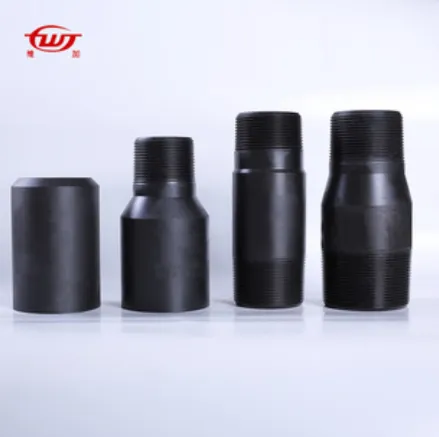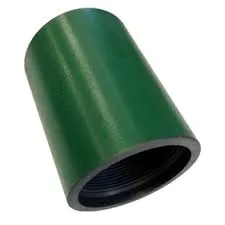Feb . 14, 2025 03:24
Back to list
tubing crossover
Tubing crossovers may not be the most glamorous component in the oil and gas industry, but their role is absolutely crucial. These specialized connectors allow for the seamless integration of different tubing strings in wells, enhancing operational flexibility and efficiency. In industries where precision and reliability are paramount, understanding the nuanced functions and benefits of tubing crossovers is vital.
In addition to function and material consideration, the installation of tubing crossovers also requires authoritative oversight. Trained technicians, often guided by strict procedural standards and quality checks, handle their installation. Proper torque application during the makeup process is critical to prevent over-tightening, which can lead to thread galling, or under-tightening, which may cause leaks. The use of digital torque gauges is now standard practice in the industry to ensure precision. From a reliability perspective, non-destructive testing (NDT) is often employed both in the manufacturing phase and prior to installation. Techniques such as ultrasonic testing or magnetic particle inspection help verify the integrity of the crossovers, ensuring there are no material flaws or cracks that could propagate under stress. Trustworthiness and industry regulation compliance serve as the foundation for any authoritative product discussion. All quality tubing crossover manufacturers adhere to relevant international standards such as those set by the American Petroleum Institute (API). These standards provide guidelines not only for design and material but also for performance expectations under specified conditions. Adherence to these standards is non-negotiable in industries where safety and reliability are directly linked to environmental and operational outcomes. In summary, tubing crossovers, while often overlooked, play a critical role in wellbore operations. An understanding of their technical underpinnings—rooted in precise engineering, material science, meticulous installation, and stringent quality control—ensures their effective application. By prioritizing expertise and reliability, this small but mighty component aids in optimizing oil and gas recovery in challenging environments. Their proper selection and deployment underscore the broader industry's commitment to efficiency, safety, and operational excellence.


In addition to function and material consideration, the installation of tubing crossovers also requires authoritative oversight. Trained technicians, often guided by strict procedural standards and quality checks, handle their installation. Proper torque application during the makeup process is critical to prevent over-tightening, which can lead to thread galling, or under-tightening, which may cause leaks. The use of digital torque gauges is now standard practice in the industry to ensure precision. From a reliability perspective, non-destructive testing (NDT) is often employed both in the manufacturing phase and prior to installation. Techniques such as ultrasonic testing or magnetic particle inspection help verify the integrity of the crossovers, ensuring there are no material flaws or cracks that could propagate under stress. Trustworthiness and industry regulation compliance serve as the foundation for any authoritative product discussion. All quality tubing crossover manufacturers adhere to relevant international standards such as those set by the American Petroleum Institute (API). These standards provide guidelines not only for design and material but also for performance expectations under specified conditions. Adherence to these standards is non-negotiable in industries where safety and reliability are directly linked to environmental and operational outcomes. In summary, tubing crossovers, while often overlooked, play a critical role in wellbore operations. An understanding of their technical underpinnings—rooted in precise engineering, material science, meticulous installation, and stringent quality control—ensures their effective application. By prioritizing expertise and reliability, this small but mighty component aids in optimizing oil and gas recovery in challenging environments. Their proper selection and deployment underscore the broader industry's commitment to efficiency, safety, and operational excellence.
Next:
Latest news
-
Tubing Crossover - API Compatible, Custom Sizes, In StockNewsNov.10,2025
-
Tubing Coupling | High-Strength, Leak-Proof Steel CouplingsNewsNov.10,2025
-
Wholesale API Threading Casing Coupling | API 5CT, Fast ShipNewsNov.10,2025
-
Pup Joint Supplier | API Certified, Custom, Quick ShipNewsNov.10,2025
-
Pup Joint Manufacturers | Precision Machined, Fast DeliveryNewsNov.10,2025
-
Tubing Coupling | Precision Steel, Leak-Proof, Fast DeliveryNewsNov.03,2025
Related Products







